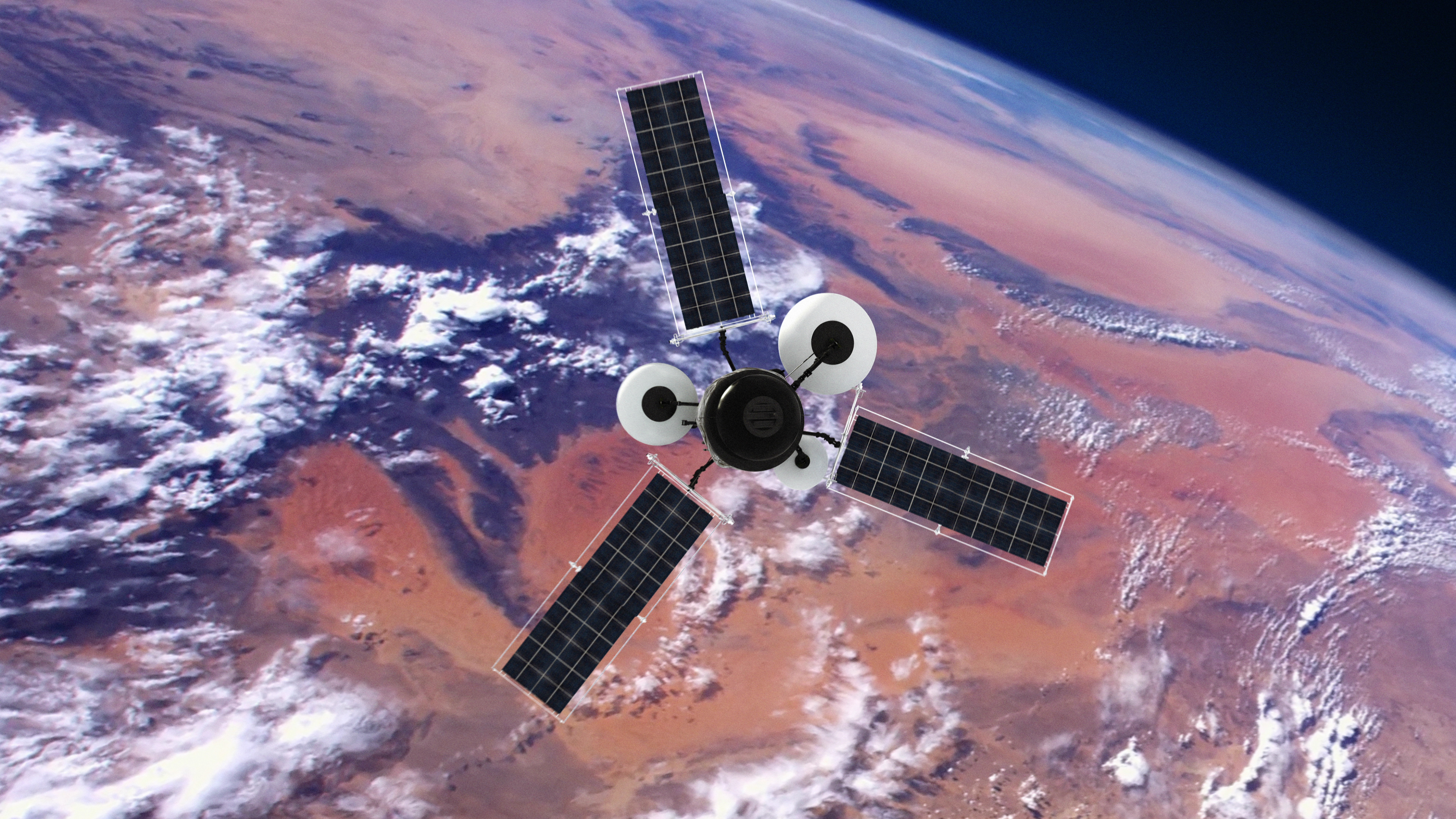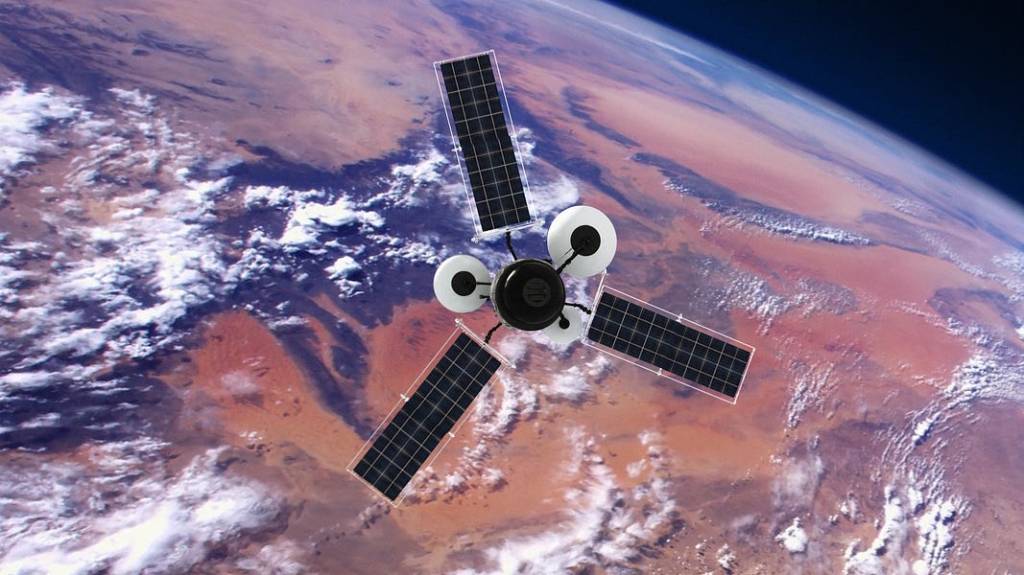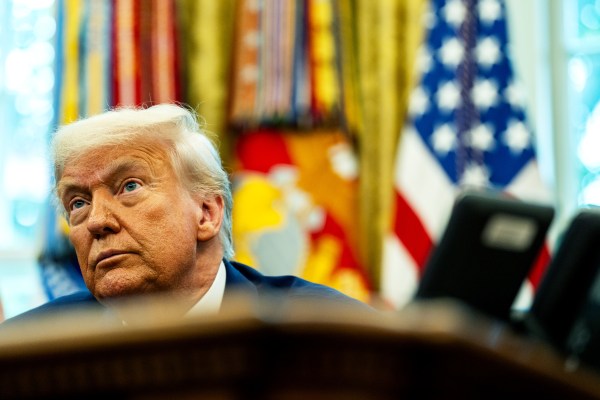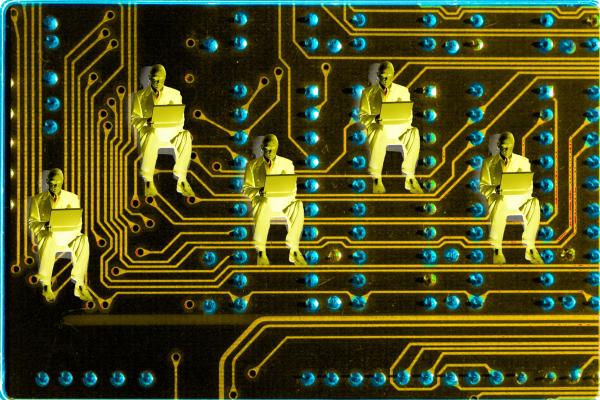Russia shot down one of its own defunct satellites in an anti-satellite missile test over the weekend, creating a dangerous cloud of debris that will expand and remain in low Earth orbit for years to come.
In an era where society depends on satellites more than ever, the test raises concerns not just about the militarization of space, but also about the potential for a debris disaster that could jeopardize communications, navigation, weather forecasts, and access to space in the future.
Space debris has built up over the past six decades, as old satellites and other spacecraft have become defunct or have collided to create millions of pieces of fast-moving debris orbiting the planet. And with a wave of new satellites being launched in recent years, many of them small and difficult to track, the odds of satellite collisions are increasing.
Debris in low Earth orbit circles the planet at speeds up to 17,500 miles per hour. Impacts at such exorbitant speeds can be devastating. Each piece of debris also has the potential to strike other objects in orbit and create more debris.
With each new debris-creating incident, such as Russia’s anti-satellite test, the orbital environment draws closer to what NASA scientists have warned about for decades: a catastrophic chain reaction that makes the destruction of satellites exponentially more likely and space activity vastly more hazardous.
The State Department has said Russia’s destruction of an old satellite has thus far generated 1,500 new pieces of trackable debris, in addition to hundreds of thousands of smaller pieces. The debris cloud almost immediately threatened space activities, intersecting with the International Space Station’s orbit and forcing the seven crew members—including Russian cosmonauts—to shelter.
NASA Administrator Bill Nelson said he is “outraged by this irresponsible and destabilizing action.”
“With its long and storied history in human spaceflight, it is unthinkable that Russia would endanger not only the American and international partner astronauts on the ISS, but also their own cosmonauts,” Nelson responded. “Their actions are reckless and dangerous, threatening as well the Chinese space station and the taikonauts on board.”
China, India, and the United States have also carried out anti-satellite tests in recent years. A 2007 Chinese test generated more than 3,500 pieces of trackable debris, much of which remains in orbit, astrophysicist Jonathan McDowell told the Wall Street Journal this week. The 2008 American test had less of a long-term impact, creating 175 pieces of debris, which have all re-entered the atmosphere. India’s 2019 test generated one piece of debris that is still in space.
Last week, the International Space Station had to maneuver to dodge a piece of debris left over from the Chinese test.
Advocates for a clean orbital environment are calling for governments to stop conducting anti-satellite tests.
“The continued testing or demonstration of anti-satellite capabilities, including the targeting of one’s own space objects, is an unsustainable, irresponsible, and destabilizing activity in space in which no responsible spacefaring state should engage,” the Secure World Foundation said in response to the Russian test this week.
It wasn’t until well into the space race that scientists began to understand the true extent of threats posed by the accumulation of space debris. In 1978, NASA scientists Donald Kessler and Burton Cour-Palais wrote a paper that changed the agency’s thinking on objects in orbit for good. Kessler and Cour-Palais showed in their research that with more and more objects in orbit, there was an increasing risk of collisions, and that the fast-moving shrapnel from the crashes would damage other satellites in the future.
“Satellite collisions would produce orbiting fragments, each of which would increase the probability of further collisions, leading to the growth of a belt of debris around the Earth,” the two scientists wrote.
A domino effect of satellite collisions in orbit came to be known as Kessler Syndrome. Early on, NASA officials didn’t want to even consider the problem Kessler identified. Cour-Palais, the co-author of the paper on orbital debris, reminisced about Kessler’s fight to address the threat in a 2004 interview for NASA’s Johnson Space Center Oral History Project.
“As I told you, this fellow who worked with me, Don Kessler—he’s very well known now—he was bringing up this orbital debris thing and the higher-ups did not want to know about it at all, because he was raising a problem and they didn’t want any more problems,” Cour-Palais said in the interview. He remembered being urged by his supervisors to tell Kessler to “come up with solutions rather than problems.”
But Kessler’s work continued to emphasize the problem was real and unavoidable. “It became a proven fact that they couldn’t really dodge around; it was true that orbital debris is a menace,” Cour-Palais said.
Kessler argued the best way to prevent exponential growth of orbital debris would be to limit how many nonoperational satellites and other spacecraft are in Earth’s orbit.
Only a few removal mechanisms exist for objects in orbit. Today, some satellites at the end of their missions are either sent into a much higher orbit, known as a graveyard orbit, or they are directed back into Earth’s gravity well to burn up in the atmosphere.
If a satellite or spacecraft is too large to burn up on reentry, it can be brought down to a designated safe spot, like far out in the seas, or remote locations like deserts, according to the European Space Agency.
The longer a spacecraft stays in orbit, the higher its risk of crashes and malfunctions that can create debris.
Countries around the world today track the locations of pieces of space debris. It’s a tall order: The U.S. Space Surveillance Network currently tracks more than 27,000 objects, some being functional spacecraft, but most of which are debris. NASA estimates there are about 23,000 objects larger than a softball in orbit, and approximately 500,000 particles 0.4 inches in diameter or larger. The smaller objects are too difficult to track consistently.
Collisions and near-misses have happened in recent years. In February 2009, a nonfunctioning Russian satellite, called the Cosmos 2251, crashed into an operational commercial satellite owned by Iridium Satellite—the first collision between two satellites in orbit.
The crash created nearly 2,000 pieces of debris larger than four inches in diameter, as well as thousands of smaller pieces of debris, according to research by Brian Weeden of the Secure World Foundation.
In January 2020, a narrowly avoided collision raised alarms about orbital debris again. Two nonoperational satellites—one launched in 1983, and another, launched in 1967—were predicted to pass within 40 feet of each other. The satellites were traveling in essentially opposite orbits, meaning a collision would have been head-on. Their paths ultimately didn’t intersect, but for many experts, the fly-by was too close for comfort.
Earlier this year, a Chinese satellite that was launched in 2019 was struck by debris from a Russian spy satellite that was launched in 1996. The collision generated at least 37 pieces of debris.
Experts fear that crashes and close calls like this are going to become more common due to massive growth in the number of operational satellites in orbit today, and tens of thousands of new satellites set to be launched in the coming years. In 2014, there were about 2,000 functioning satellites orbiting the planet, a number that has more than doubled in the time since. That doesn’t count the defunct satellites still in orbit.
As of last week, 12,170 satellites have been sent into orbit since the dawn of the space age, according to the European Space Agency. The ESA estimates about 7,630 of those are still in space, and about 4,700 are still functional. In that time, there have been more than 630 instances of spacecraft break-ups, explosions, collisions, or other events that created debris.
Companies such as SpaceX have committed to sending thousands of satellites into orbit for various purposes. Since 2019, SpaceX has launched more than 1,700 Starlink satellites to provide internet service around the world. That number is set to eventually grow to nearly 30,000 satellites.
The company has said it is taking steps to make spacecraft more resistant to damage from strikes in an effort to minimize the generation of new debris.
Other corporations, including Amazon and the U.K.-based OneWeb, are also working on satellite internet networks. OneWeb has launched 358 of its satellites, per data from the U.S. Space Surveillance Network. That is a little more than half of the number of satellites the company plans to launch as part of its internet service. Amazon, meanwhile, has not yet launched any of its planned satellites. It won approval from the FCC last year to send 3,236 satellites into orbit, half of which are required to be in space by 2026, with the rest operational by 2029.
Innovators have brought some optimism to the fight for a clean space environment. In February 2020, a commercial satellite docked with an older satellite in orbit for the first time to extend the original satellite’s mission life.
The resupply satellite, known as the Mission Extension Vehicle or MEV-1, attached to an operational 18-year-old communications satellite that was running out of fuel. According to a New York Times report at the time, the MEV-1 will remain attached to the communications satellite, guiding it in orbit and keeping it running for five years. Then, it will push the older satellite far out into an unobtrusive, high graveyard orbit. MEV-1, developed by Northrop Grumman, is expected to work for 15 years and is likely to service multiple satellites. Satellite servicing as exhibited by MEV-1 has much potential to limit the possibility of orbital collisions and the proliferation of harmful space debris.
Other countries around the world are taking steps to reduce orbital pollution. For instance, the European Space Agency is moving forward with a mission to remove an item of debris from orbit. Planned for 2025, the ClearSpace-1 mission will capture a rocket’s upper stage that was left in orbit in 2013. It will then be deorbited for both items to burn up on reentry in the atmosphere.
Work is also being done in the policy realm. The National Space Council unveiled updated orbital debris mitigation practices in November 2019 with some changes for the government’s procurement and operation of space services to minimize the risk of creating debris.
The mitigation practices were first established in 2001 and have been updated periodically since. Still, some experts complained the document did not go far enough.
Weeden of the Secure World Foundation criticized the space council for not tightening an existing rule for satellites to be deorbited after 25 years in operation. Some have called for this rule to be shortened, especially for satellites that are only set to be in operation for a short period of time. Experts like Weeden also argue the U.S. government should be contributing directly to cleanup efforts in space, a goal that has existed for years but has not been followed up with a concrete program.
In the aftermath of Russia’s anti-satellite test, members of Congress may have a greater sense of urgency to take up legislation to enhance American capabilities to track orbital debris.
The House version of this year’s defense authorization bill includes language requiring a new report from the National Space Council on the risks of debris, as well as a congressional briefing on the matter. It mandates another report from the Defense Department on space debris mitigation and remediation options.
Virginia Democratic Rep. Don Beyer, who chairs the House Science, Space, and Technology subcommittee on space, is drafting legislation to boost situational awareness in space, according to his spokesman, Aaron Fritschner.
Fritschner said Beyer is taking time to get input from experts, government officials, and other stakeholders about how best to address the matter.
“The goal of his legislation is to clarify agency roles in protecting American astronauts and space operations from the danger posed by orbiting objects and debris,” Fritschner told The Dispatch. “The issue is complex, so it will require time and care to get the policy right, but as the Russian ASAT test and resulting safety situation at ISS shows, it is important for the U.S. government to get this right, and to do it with all possible speed.”







Please note that we at The Dispatch hold ourselves, our work, and our commenters to a higher standard than other places on the internet. We welcome comments that foster genuine debate or discussion—including comments critical of us or our work—but responses that include ad hominem attacks on fellow Dispatch members or are intended to stoke fear and anger may be moderated.
With your membership, you only have the ability to comment on The Morning Dispatch articles. Consider upgrading to join the conversation everywhere.